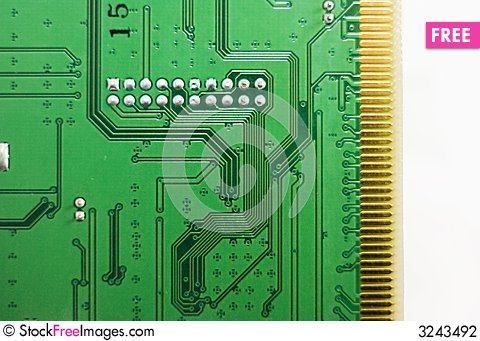Marek Wojcik - Wang interface
Wang Printer Emulation - a story of success
Sorry, the picture does not show the interface, as - to my knowledge - there never was taken a picture of it.
In the summer of 1985 I was given the task to develop a printer-emulation for WANG-computers. I had been engaged by a small Viennese company. To start with I had a data-monitor (with serial RS232 interface!) and a used Wang host system to my disposition. As Wang were using bi-axial cables for communications with the periphery, I had to explore these parameters with the help of an oscilloscope. My next step was to build a receiver for these data. A Schlumberger spectral-analyzer with Z80 circuit boards was ordered thereafter.
My greatest adventure with hardware development had begun. And it was a one-man-show (from the first raw idea to the last produced unit).
My first step was to analyze the printer I had to emulate. I soon realized that the interface needed two processors – either Intel 8085 or Z80.
The Wang-system sends a program – a microcode – after powering-up a periphery device. This microcode is stored into max. 64 KB DRAM and then processed by one CPU. I decided to build my interface the same way, and have the emulation of a Wang-needle-printer be done by the second processor.
In order to safeguard the interface against copies and to reduce the amount of circuit I chose to use Altera PLDs (Programmable Logic Devices). The processor had to be the Z80 – I knew the language by heart.
A year later I could provide the first printout from the Wang printer. The first prototype of the circuit board and the mounting plan took me another year to finish. Most of this time was spent in writing the software emulation.
The whole logic was stored into an EPROM, together with the printer specific configuration. For four years I had to do the programming of this EPROM manually by hexcode and an EPROM burner, until I got an Aschling In-Circuit-Emulator for Z80 with assembler.
The interface was powered via the parallel port (Centronics) of the printer. A second Centronics-port I did add for other sources like a PC to be using the printer.
Thus a stable solution was realized.
The emulation of a needle printer was the right decision too. Most of these interfaces were built directly into the printers. The interface is able to communicate with printers from Kyocera, Xerox and Canon, HP laser printers and even with the modern ion-printers having an print output of over 100 pages per minute. With Wang it always was the type 5577 needle printer.
In Austria I did a few installations of this interface, then abroad in Germany, Luxembourg. Even in South Africa I successfully have connected Wang computers with different printers, and gave the necessary instructions there. The interface was sold in the USA (e.g. Lockheed in California), in the Arabic Emirates and many other countries.
All in all over 1000 units of this interface were sold.
I worked six years with this company; thereafter I opened my own business.


